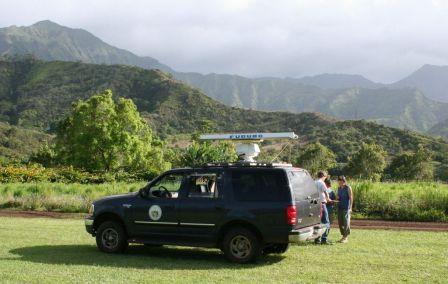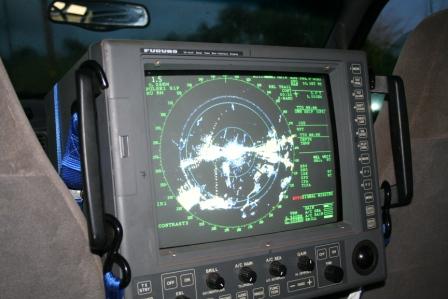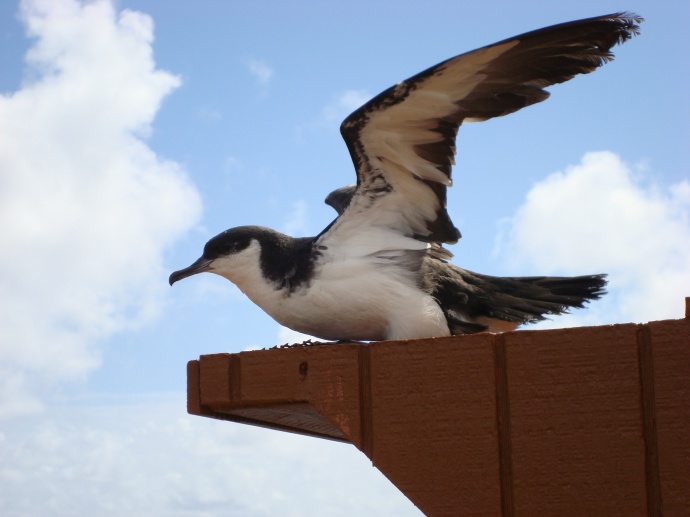Kauaʻi’s Endangered Seabirds Being Monitored by Radar

Kaua‘i Endangered Seabird Recovery Project radar truck. Kaua‘i Endangered Seabird Recovery Project courtesy photo.
By Maui Now Staff
Annual seabird radar monitoring work has begun in conjunction with the start of the breeding season for both both ‘a‘o (Newell’s shearwaters) and ua‘u (Hawaiian petrels) on Kauaʻi.
Monitoring is part of the Kaua‘i Endangered Seabird Recovery Project.
Two radar trucks–one white, one red–are patroling 18 standard sites along Kaumualiʻi and Kuhio Highways and some county roads around the island. The sites are areas known for ‘a‘o and ua‘u movement between the sea and montane breeding grounds.
Because both species are nocturnal, radar surveys are conducted at night, the first two hours after dark, when birds return from the sea, and two hours before dawn, when seabirds head back out to sea.
The radar trucks will remain stationary for the entire night and return to home base in the morning.
“Radar is an important tool for tracking seabirds moving at night and is used around the world for this purpose,” said Dr André Raine, KESRP Project coordinator. “Because these two species of seabirds only fly back to their colonies at night it extremely hard to see and count them. Radar allows us to “see” the birds flying overhead in the darkness as a series of dots passing across the radar screen. By assessing the speed of movement, the direction of travel and the time that the event is recorded, we can then identify the birds to species.”
Radar has long been used to study the movement of nocturnal seabirds on Kauaʻi and other Hawaiian Islands. The first radar surveys were conducted on Kauaʻi in 1993 and have continued at the same sites almost every year.
“By surveying the same sites every year, we can see how our endangered seabirds are doing by looking at the change in the number of birds passing by the same sites each year,” said Raine. “Because Kaua’i holds 90% of the world’s population of ‘a‘o and a significant proportion of the world’s population of ua‘u, understanding how the populations are changing at an island level is critical to their conservation.”
Radar work will peak in June and continue until September.
For more information, go online.

Kaua‘i Endangered Seabird Recovery Project radar truck. Kaua‘i Endangered Seabird Recovery Project courtesy photo.

Kaua‘i Endangered Seabird Recovery Project radar monitor. Photo courtesy Kaua‘i Endangered Seabird Recovery Project.













